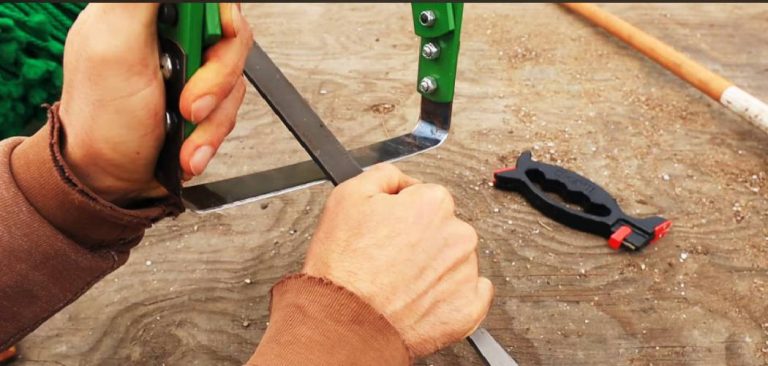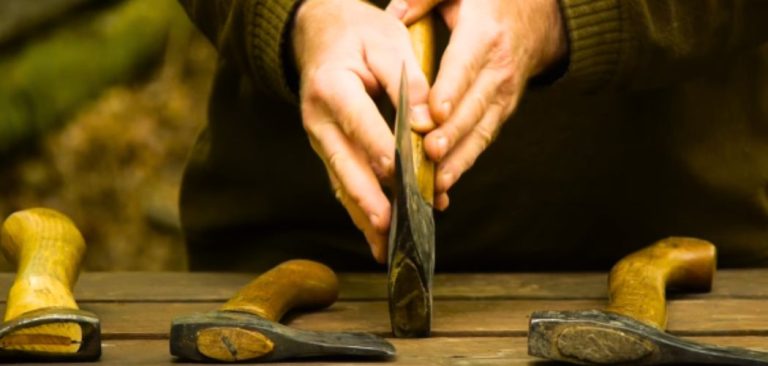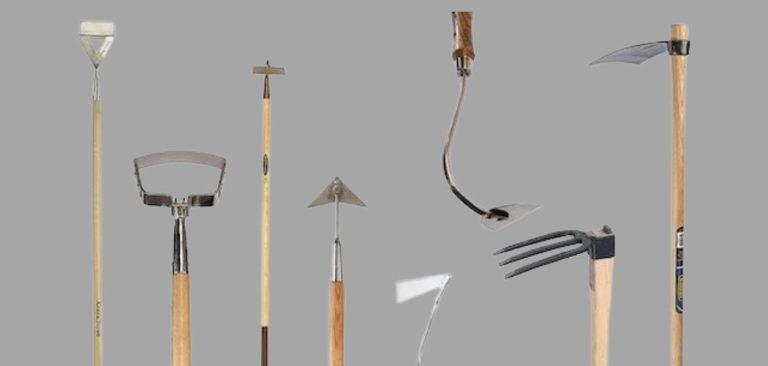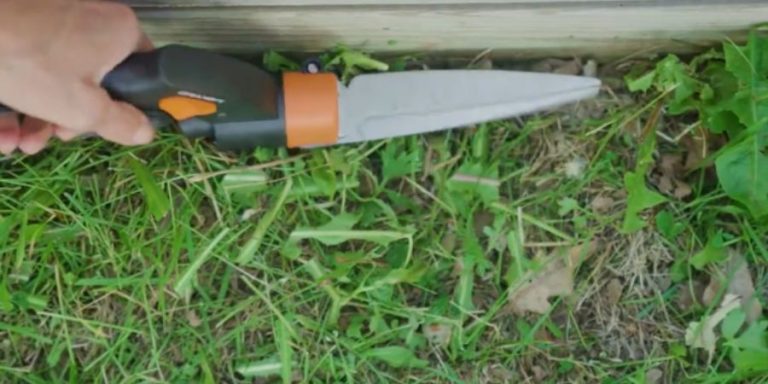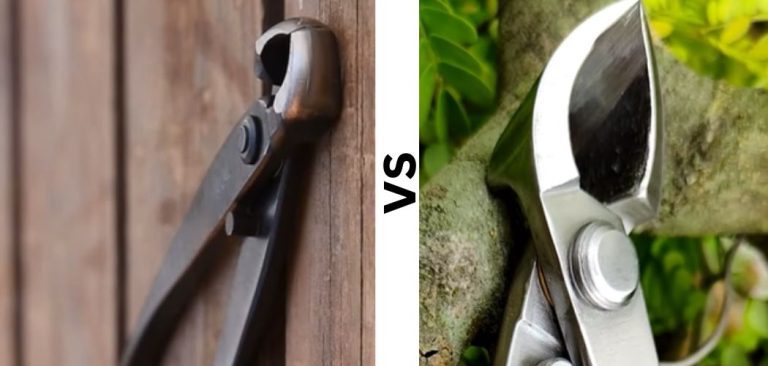“Grape Hoe Vs Grub Hoe: What You Need to Know”
Grape hoes and grub hoes are my favorite tools for farming, but I often use them incorrectly because I don’t know their proper usage and differences. As a result, my spade was easily damaged or became unusable.
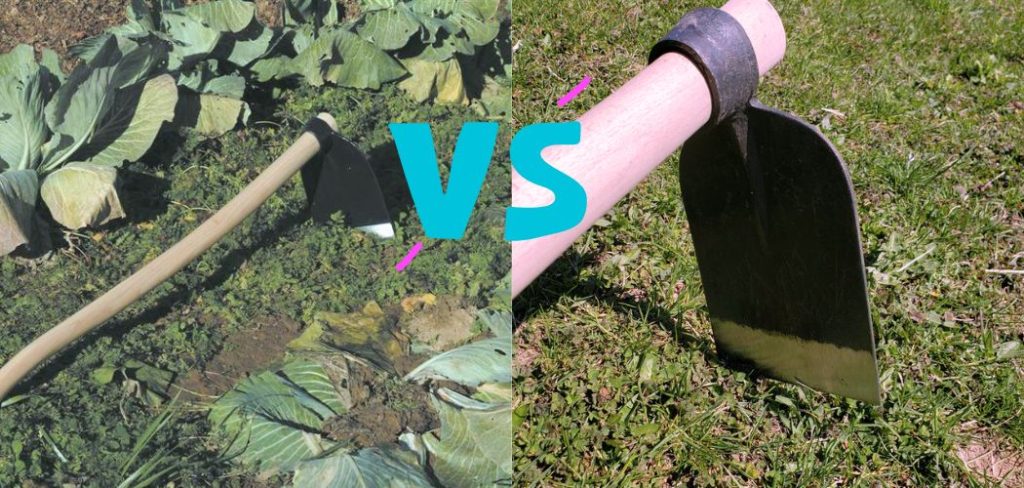
I had to spend an extra $15-20 to repair it. Another day, when I was digging the root of a large tree with a grape hoe, the hoe hit the root and broke a large part of it. I had to spend a lot of money to buy another one. If you don’t want to make the same mistake, read this article carefully. I hope your time will not be wasted.
What is a Grape Hoe?
The grape hoe is employed in vineyards for its precision in cultivation and weeding tasks. With its long handle, typically measuring between 5 to 7 feet, and a flat blade spanning 4 to 6 inches in width, it efficiently cuts weeds and loosens soil around grapevines.
This ensures optimal vine health by facilitating nutrient absorption and moisture retention. The tool’s design is particularly suited to vineyard layouts, with narrow rows where traditional machinery may struggle to navigate. Its usage aids in maintaining the cleanliness of the vineyard while minimizing root damage, contributing to higher grape yields and overall vineyard productivity.
What is a Grub Hoe?
The grub hoe is specifically used for tasks requiring precision and strength in agriculture and gardening. Its primary purpose lies in digging and cultivating soil, with a blade width ranging from 6 to 8 inches and a handle typically measuring between 3 to 5 feet.
This tool is adept at chopping roots and breaking up compacted soil, making it invaluable for preparing garden beds and planting areas. Its sharp blade allows for efficient removal of weeds and unwanted vegetation, ensuring optimal growing conditions for crops. The grub hoe’s robust design and ergonomic handle minimize user fatigue, enhancing efficiency in various farming and gardening applications.
What is the Actual Difference Between a Grape Hoe vs Grub Hoe?
When you get the right information about a grape hoe and a grub hoe, you will open up a whole new dimension to getting the best results from using them. We often use them in almost all types of agricultural work without proper information about their use. As a result, these hoes wear out very quickly.
Again, we have to spend $50-60 to buy a new spade. I don’t want this damage to happen to you. Read the information I have given below carefully and learn about the use of grape hoes and grub hoes and their various differences.
1. Blade Shape
Grape Hoe:
Shape: Thin and curved.
Purpose: The curved blade is designed for precision. It helps to weed and cultivate soil efficiently, especially in narrow spaces like between rows of plants.
Grub Hoe:
Shape: Thicker with a straight or slightly concave edge.
Purpose: The robust, straight blade is made for heavy-duty tasks. It is used for digging, chopping, and breaking up soil, making it suitable for tougher gardening jobs.
2.Primary Use
Grape Hoe:
Function: Primarily used for weeding and soil cultivation. Its design is optimized for removing weeds in a controlled manner, particularly in settings like vineyards or densely planted garden beds.
Grub Hoe:
Function: Versatile and used for a variety of tasks, including digging, chopping, and edging. It is excellent for breaking up hard soil, removing sod, and handling extensive weeding.
3.Innovation and History
Grape Hoe:
Origin: An Italian innovation tailored for precise weeding and cultivation. It is not designed for heavy digging but excels in controlled, detailed work.
Grub Hoe:
Innovation: Includes mechanized versions like the tractor-attached grub hoe, introduced in the late 1940s. This evolution demonstrates its adaptability from manual to mechanized use for broader and more strenuous tasks.
4.Functionality
Grape Hoe:
Strengths: Ideal for quickly clearing weeds and cultivating soil in smaller or more precise areas. It’s less effective for heavy soil work but performs well in managing large patches of weeds efficiently.
Grub Hoe:
Strengths: Handles tougher tasks with ease, such as digging up roots, breaking up compacted soil, and removing sod. Its heavy-duty design makes it suitable for more demanding gardening tasks.
5.Terminology
Grape Hoe:
Also Known As: Italian grape hoe.
Types: Includes Curved Grape Hoe, Standard Grape Hoe, Heavy-Duty Grape Hoe, and Lightweight Grape Hoe.
Grub Hoe:
Also Known As: Azada, Grubbing Hoe.
Models: Includes Rogue 70F60 Grubbing Hoe, Truper 33119 Tru Pro Grubbing Hoe, and Solidtools CR8119 Grubbing Hoe.
6. Blade and Handle Specifications
Grape Hoe:
– Blade Size: 7 inches wide with a 10-inch overall height.
– Handle: Typically 40 inches long with a diameter of 2 inches by 1.625 inches.
Grub Hoe:
Blade Size: 4.5 inches by 8.5 inches.
Handle Length: Available in 42″, 48″, 54″,with 60″.
Features: Can be manual or mechanized, with some models featuring up to 5.3 horsepower.
7. Overall Use
Grape Hoe:
Best For: Controlled weeding and soil cultivation in narrow or precise areas. Ideal for quick, efficient removal of weeds and light soil work.
Grub Hoe:
Best For: Heavy-duty tasks, including digging, breaking up soil, and removing large amounts of weeds. Suitable for more demanding and extensive garden work.
5 Things to Consider While Buying a Grape Hoe or Grub Hoe
When purchasing a grape hoe or a grub hoe, it’s essential to evaluate several factors to ensure you choose the right tool for your gardening needs. Here’s a guide to help you make an informed decision:

1.Blade
Grape Hoe:
Size: Opt for a blade that suits your garden’s size. A smaller blade is sufficient for tight spaces and precision work, while a larger blade may be necessary for more extensive areas.
Material: Look for a blade made from high-quality carbon steel for durability and effectiveness in cutting and cultivating.
Grub Hoe:
Size: Choose a blade size based on the type of work you plan to do. A larger blade is ideal for heavy-duty tasks like digging and breaking up soil, while a smaller blade works for more detailed tasks.
Material: Carbon steel is recommended for its strength and longevity, especially for demanding tasks like trenching and heavy soil work.
Handle
Grape Hoe:
Type: Handles are typically made of wood and fiberglass. Wooden handles are known for their comfort and traditional feel, while fiberglass handles offer superior durability and resistance to weathering.
Length: Ensure the handle length suits your height and the type of work you’ll be doing. A longer handle provides better reach and leverage for larger areas.
Grub Hoe:
Type: Similar options are available—wood for comfort and fiberglass for durability. Choose based on your need for handling and the tool’s intended use.
Length: The handle length should be adequate for your gardening tasks, whether you need extra leverage for digging or precision for smaller tasks.
3. Customer Reviews
Grape Hoe:
Importance: Check reviews to gauge the effectiveness and reliability of the grape hoe. User feedback can provide insights into the tool’s performance, durability, and ease of use.
Grub Hoe:
Importance: Reviews are crucial for understanding the tool’s strengths and weaknesses. Look for feedback on the hoe’s ability to handle tough soil, durability, and overall satisfaction.
4. Price
Grape Hoe:
Cost Considerations: Prices can vary based on the material and brand. Generally, fiberglass handles are more expensive but offer greater longevity. Evaluate the cost relative to the hoe’s features and your budget.
Grub Hoe:
Cost Considerations: Expect higher prices for premium materials and features. Compare different models and brands to find a good balance between cost and functionality.
5. Type of Work
Grape Hoe:
Purpose: Determine if the hoe will be used for weeding, cultivating, or other specific tasks. A tool designed for precision work will differ from one made for broader cultivation.
Grub Hoe:
Purpose: Identify the primary tasks—digging, trenching, or heavy soil work. Choose a hoe with the appropriate blade size and handle length based on the type of work you’ll be performing and the size of your garden.
By considering these factors, you can select the right grape hoe or grub hoe that fits your gardening needs and preferences.
FAQs
Can I Use a Grub Hoe for Weeding in a Vineyard?
Yes, you can use a grub hoe for weeding in a vineyard, but it might be overkill for smaller weeds. A grape hoe is generally more efficient and precise for this task, especially in narrow rows.
How Do I Choose the Right Handle Length for a Grape Hoe and a Grub Hoe?
The handle length should be comfortable for you and allow you
to work effectively without straining. Consider your height and the type of work you’ll be doing. Generally, a longer handle provides more leverage for digging or reaching into deeper areas.
When Should I Use a Grape Hoe Versus a Grub Hoe?
Grape Hoe:Best suited for precision tasks like weeding and cultivating in narrow spaces, especially in vineyards or densely planted areas.
Grub Hoe: Ideal for heavier duties such as digging, breaking up compacted soil, and removing sod. It’s great for preparing larger garden beds or handling tougher root systems.

